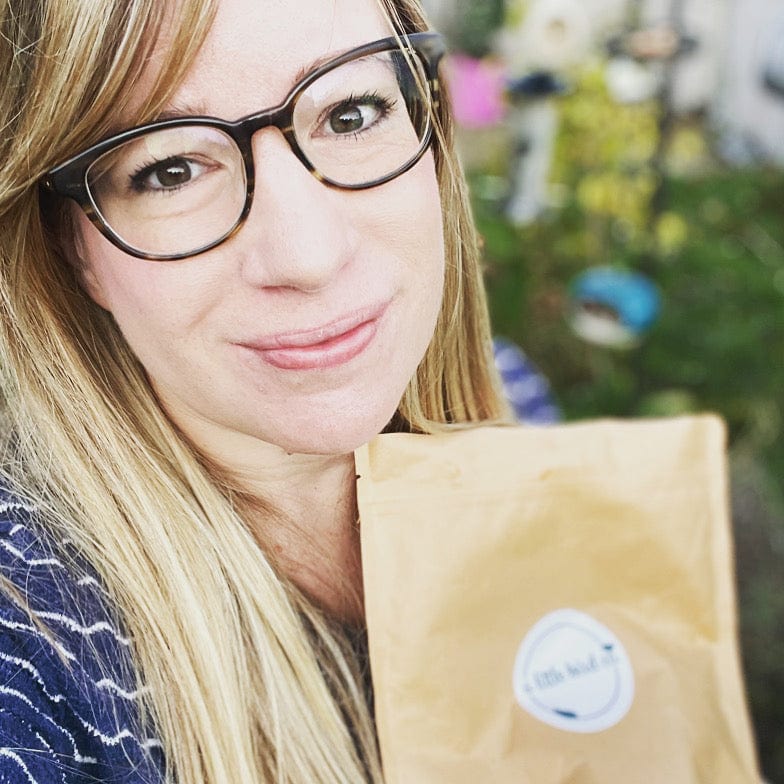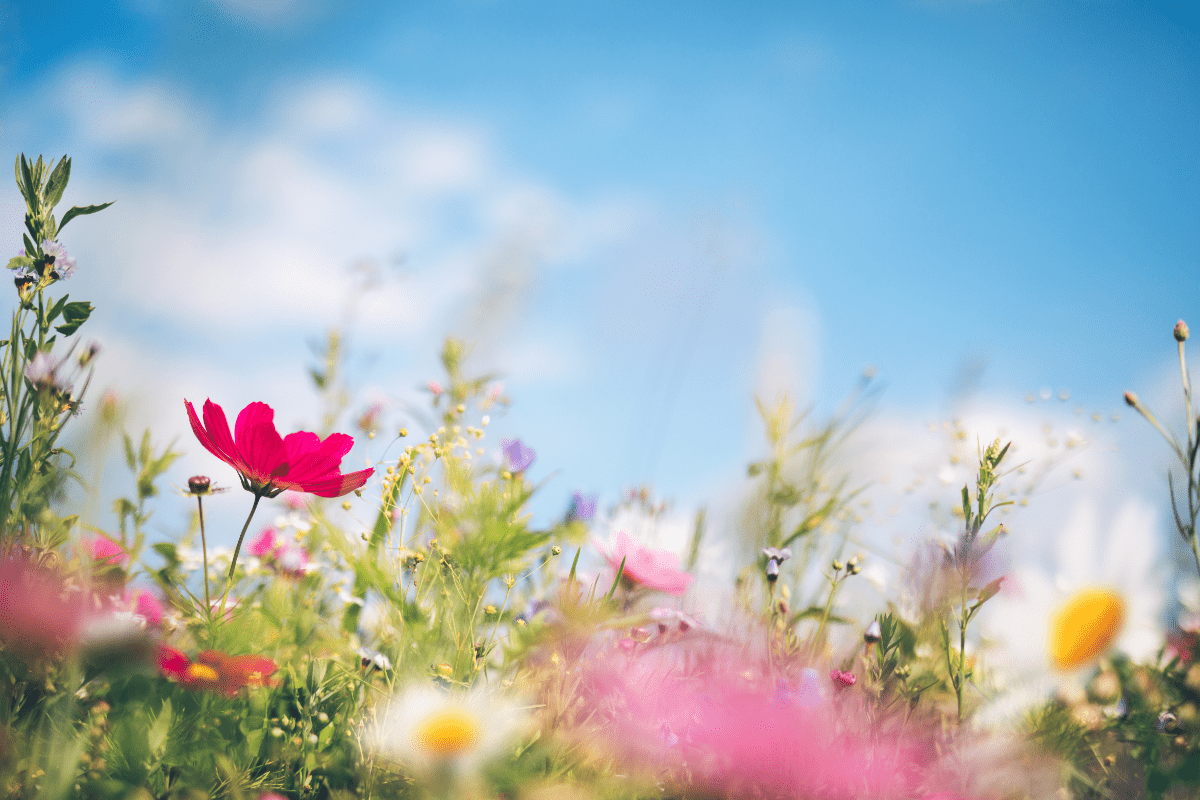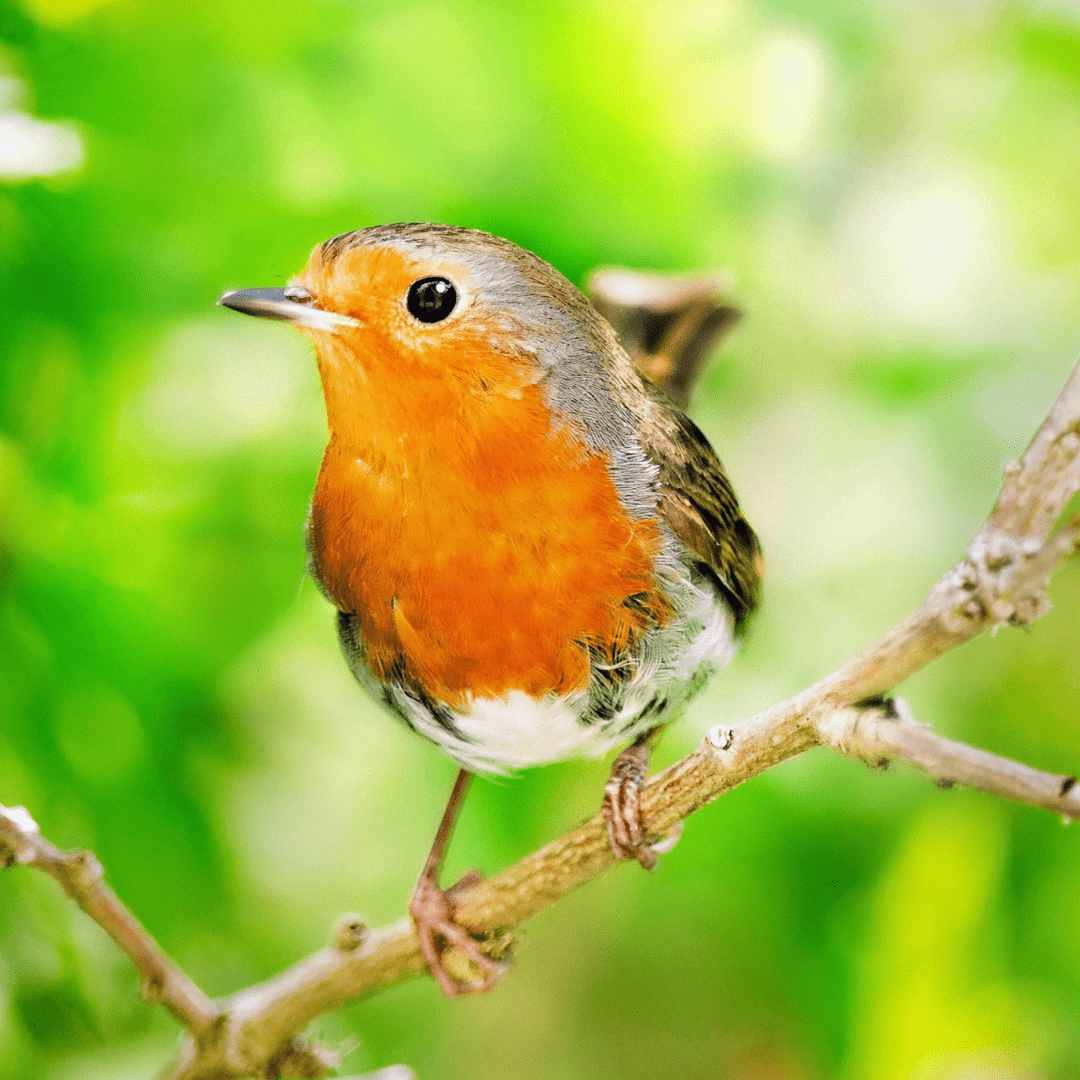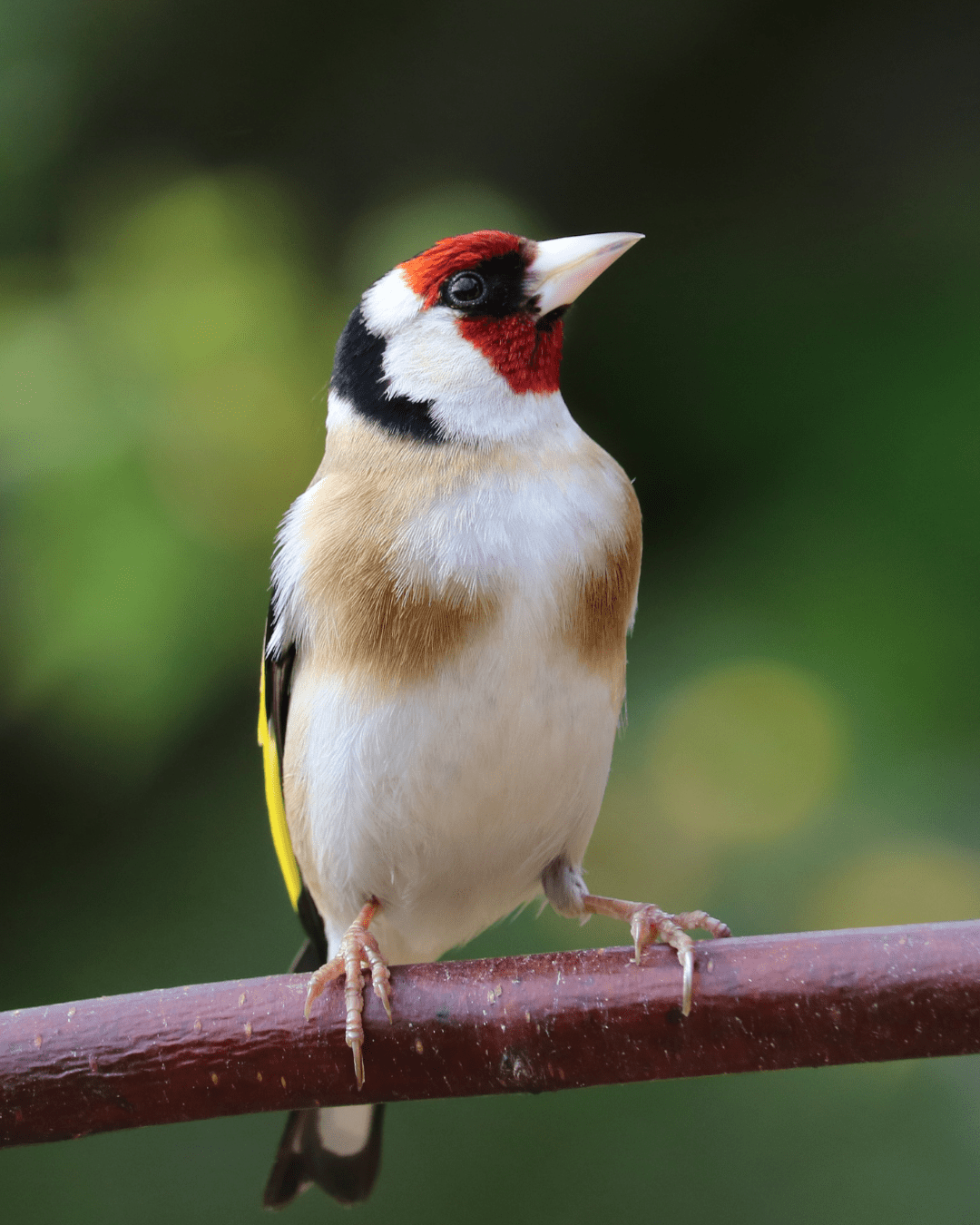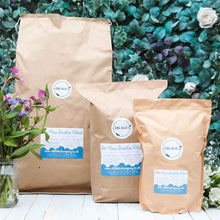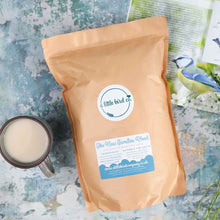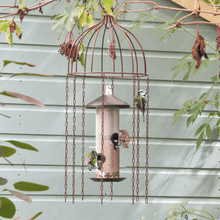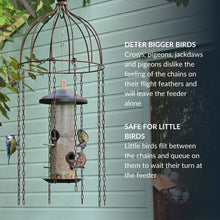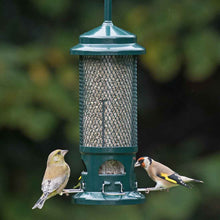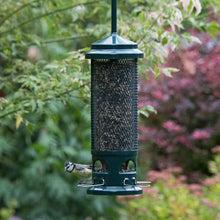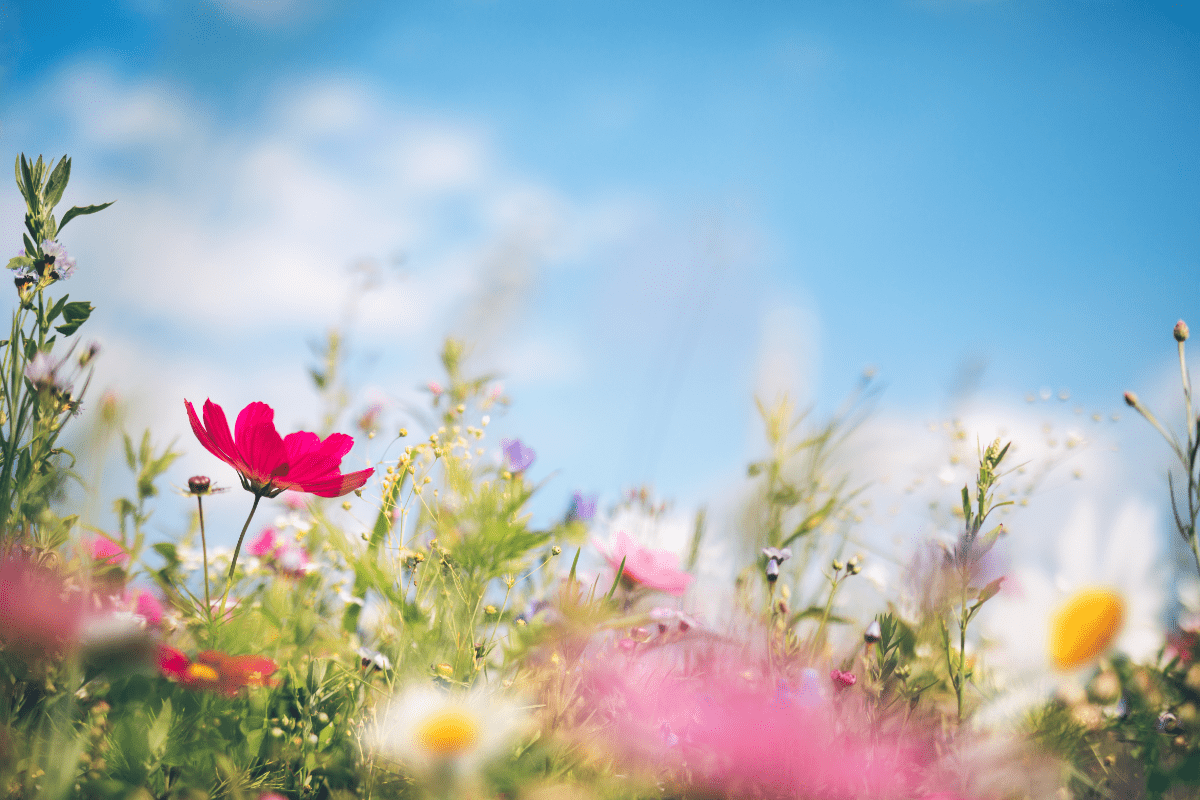A Garden Birdwatcher’s Guide to the Greenfinch
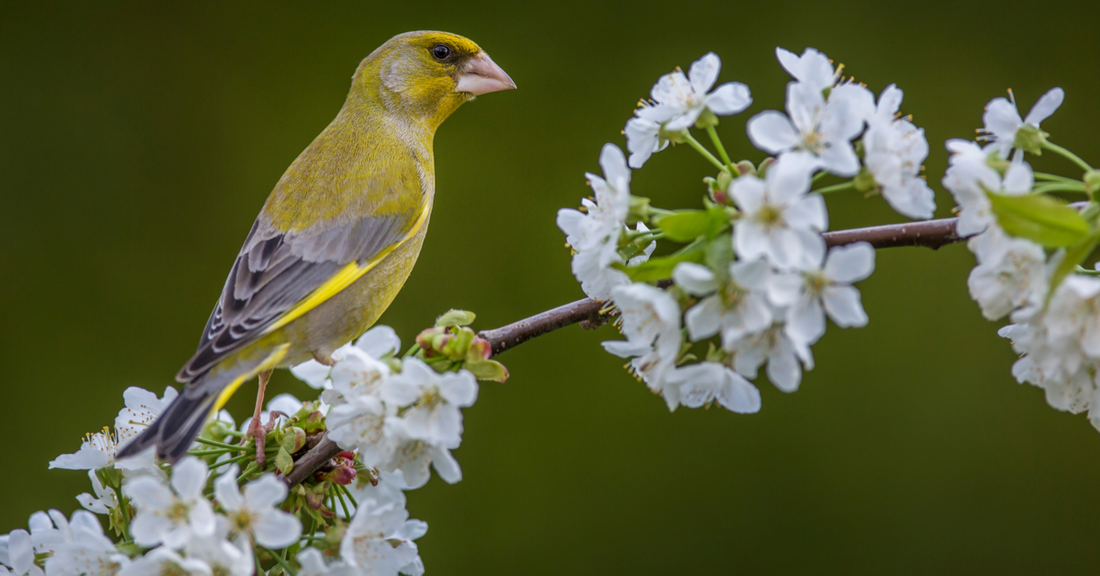
Greenfinches are found across most of the British Isles, with an estimated 1.7 million breeding pairs staying put all year round, delighting us with their bright, chattering song and sometimes comical behaviour at the bird feeder. Once more commonly associated with farmland and open countryside, they were pushed out of their natural habitats by intensive agriculture and declining food sources. Thankfully, these adaptable little finches managed to carve out a niche in our parks, gardens and hedgerows, especially in urban and suburban areas, where they now flourish. They’re especially fond of sunflower hearts, peanuts, insect suet and hemp seed, and once they find a reliable food source, they’re rarely far away. Males are more vibrantly coloured than females, with vivid green plumage tinged with flashes of yellow along the wings and tail, while both sexes sport a distinctive forked tail, chunky beak and subtle black markings around the eyes. Their strong, thick bills are perfect for cracking tough seeds, and they use them to great effect, often holding their own in a bustling crowd at the bird table. Although sociable around other species such as tree sparrows, reed buntings, yellowhammers and linnets, greenfinches are known for their squabbles with one another, puffing up and posturing to assert dominance even while mid-feed.
In spring, the male puts on an elaborate fluttering flight display to attract a mate, singing as he loops and glides through the air. The pair will go on to build a well-concealed nest in a hedge or conifer, made from moss, twigs and grass, lined with soft materials like hair or wool. They typically raise one or two broods each year, laying between four and six pale eggs, which are incubated for around eleven to fifteen days. Chicks fledge at just over two weeks old and usually remain close to their birthplace – greenfinches aren’t great travellers. In autumn, they gather in noisy flocks of up to several hundred birds to forage communally, often roaming across gardens, fields and hedgerows. After a worrying decline during the 1970s and 80s, numbers picked up in the 90s – but in recent years, greenfinches have again suffered losses due to the parasitic disease trichomonosis, which causes them to become fluffed up, lethargic and unable to feed properly. Affected birds may regurgitate food or drool, contaminating shared feeders and water sources. The good news is that the parasite doesn’t survive long outside the host, so keeping your feeders clean and rinsing out bird baths daily is one of the most effective ways you can help protect visiting greenfinches. Despite the challenges they face, these feisty little birds remain one of the most colourful and characterful visitors to the British garden.
Ready to deepen your connection with the birds in your garden? Discover more about your feathered friends and how to attract them to your space with Amidst the Birdsong: A Garden Birdwatcher's Journal. This beautifully crafted journal is the perfect companion for anyone looking to observe and learn about the birds visiting their garden. Start your birdwatching journey today – click here to learn more.

